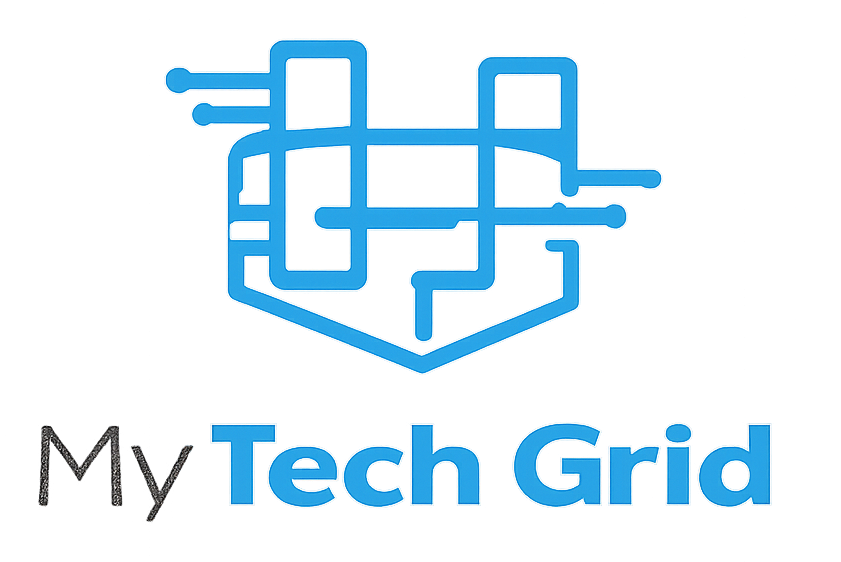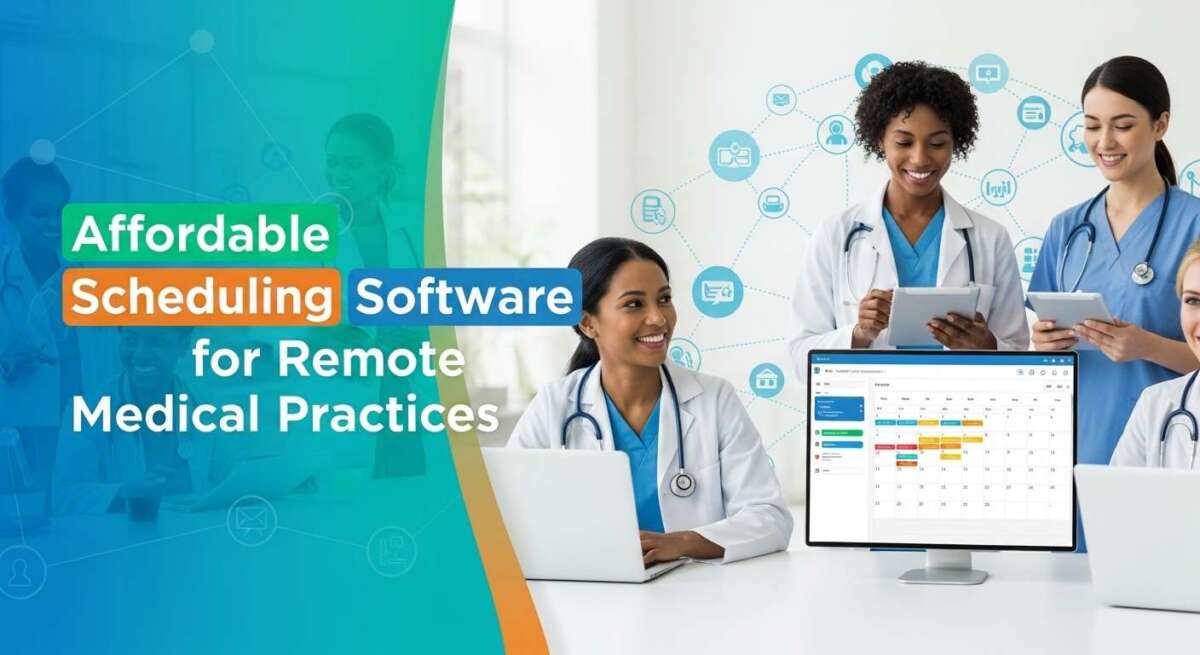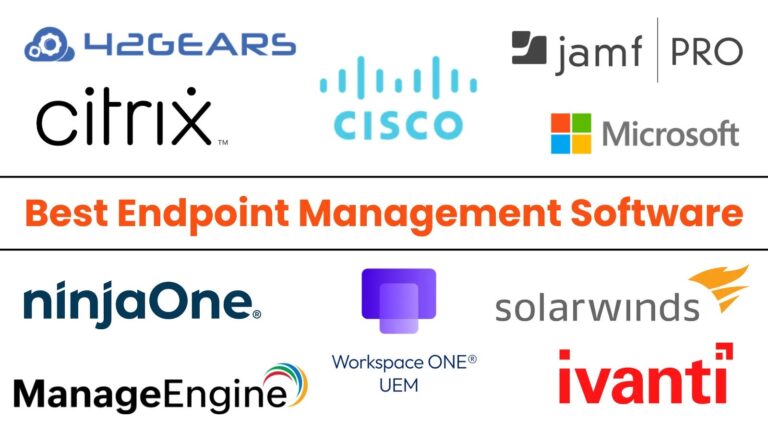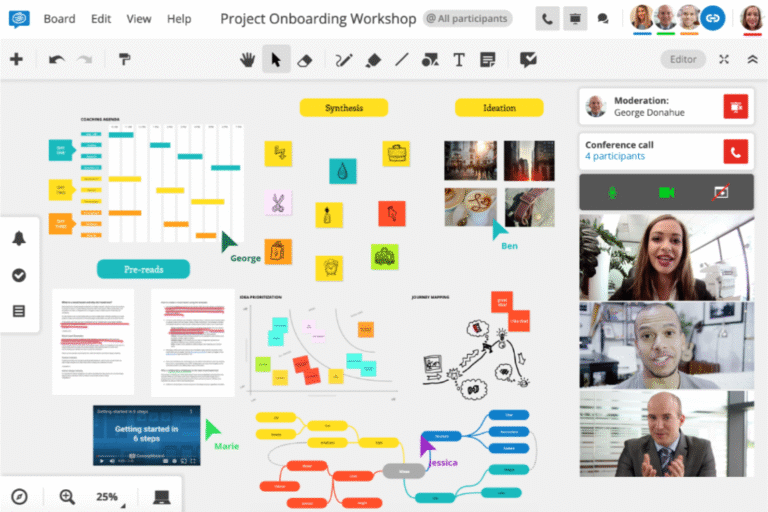Affordable Scheduling Software for Remote Medical Practices
Managing appointments in a remote medical practice can quickly become overwhelming without the right tools. You need scheduling software that is not only reliable but also affordable and easy to use.
Imagine having a solution that helps you organize patient visits, coordinate with your team, and reduce no-shows—all while fitting your budget. You’ll discover the best affordable scheduling software options designed specifically for remote medical practices. Keep reading to find the perfect tool that will save you time, improve patient care, and streamline your daily operations effortlessly.
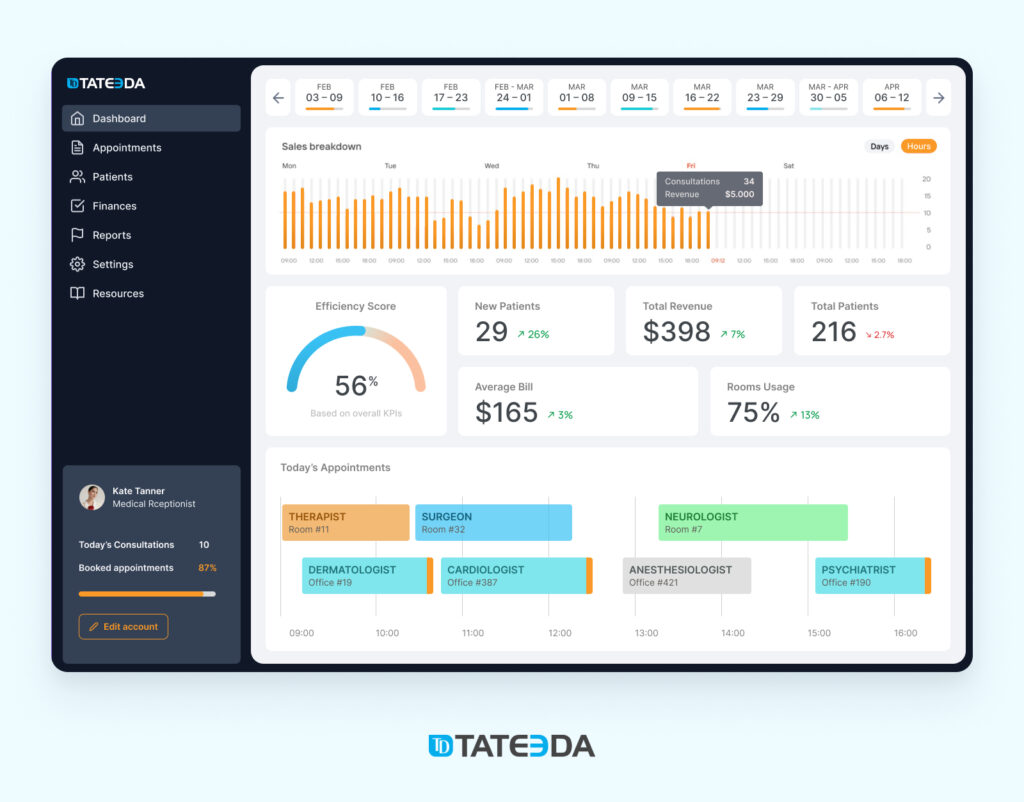
Credit: tateeda.com
Key Features For Medical Scheduling
Efficient scheduling plays a vital role in remote medical practices. Choosing software with the right features improves patient care and staff productivity. The best tools simplify appointment booking, patient communication, and data management. Key features ensure smooth daily operations and secure handling of sensitive information.
Appointment Management
Scheduling software should allow easy booking and rescheduling of appointments. It must support multiple calendars for doctors and staff. Automated reminders reduce no-shows and save time. A clear overview of available slots helps avoid double bookings. Integration with electronic health records streamlines patient information access.
Patient Notifications
Automated notifications keep patients informed about upcoming visits. These alerts can be sent via email or text messages. Customizable messages improve patient engagement and reduce missed appointments. Notifications also help with pre-visit instructions or follow-up reminders. This feature enhances communication without extra staff effort.
Telehealth Integration
Remote medical practices rely on telehealth for virtual visits. Scheduling software should link directly to video conferencing tools. This allows patients to join appointments easily from home. Integration also enables quick updates to appointment status. Telehealth support expands care options and improves patient access.
Data Security
Protecting patient data is a top priority in healthcare. Scheduling software must comply with HIPAA and other regulations. Encryption keeps patient information safe during storage and transfer. User access controls limit data viewing to authorized personnel only. Strong security builds trust and prevents costly data breaches.
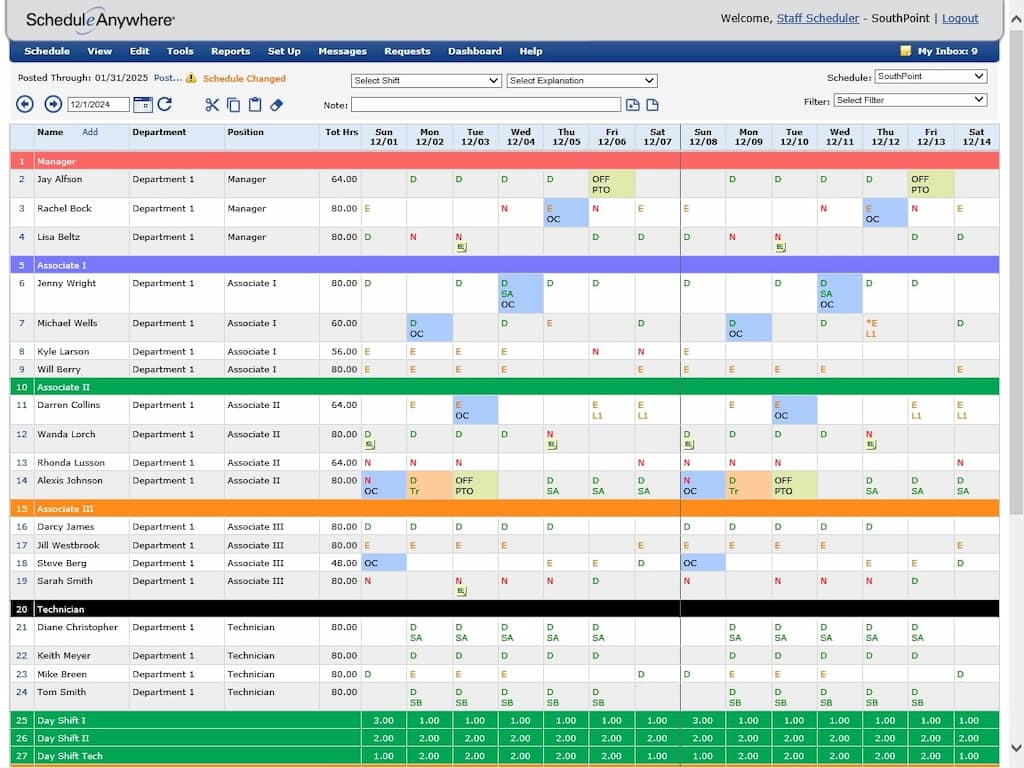
Credit: everhour.com
Top Affordable Software Options
Choosing the right scheduling software is key for remote medical practices. Affordable options help manage staff shifts and patient appointments without overspending. The best tools combine ease of use with essential features. Here are some top affordable software choices that fit remote healthcare needs.
Shiftboard For Healthcare Staff
Shiftboard works well for healthcare teams managing shifts. It offers tools to create and adjust schedules quickly. Staff can swap shifts or request time off through the app. The software supports complex scheduling needs common in medical settings. It helps reduce errors and saves time on manual planning.
Calendly For Client Booking
Calendly simplifies booking appointments with patients. Clients choose available times without calling the office. The software integrates with calendars to avoid double bookings. It also sends automatic reminders to reduce no-shows. Calendly suits remote practices that need easy online scheduling.
Google Calendar For Task Scheduling
Google Calendar is a free tool for managing tasks and events. It allows sharing calendars among staff members. Teams can set reminders and deadlines to stay organized. The platform works on many devices and syncs in real time. Its simplicity makes it a popular choice for small medical teams.
Homebase For Employee Scheduling
Homebase helps create employee schedules and track hours. It offers shift alerts and time clock features. Managers can approve time off and communicate with staff easily. The software fits practices needing clear work schedules and attendance records. Homebase keeps everyone informed and punctual.
Pricing Models And Plans
Choosing the right scheduling software for remote medical practices depends heavily on understanding pricing models and plans. Each software provider offers different ways to charge, which can affect your budget and the features you receive. Knowing these pricing structures helps find a balance between cost and functionality.
Free Vs Paid Features
Many scheduling tools offer free plans with basic functions. These might include simple appointment booking and limited users. Paid plans provide advanced features like patient reminders, integrations, and reporting. Free versions suit small practices or trial use. Paid versions work better for growing practices needing more tools.
Per User Pricing
Most scheduling software charges based on the number of users or providers. This means each doctor or staff member may require a paid license. Pricing per user helps scale costs with your team size. Smaller teams pay less, while larger teams pay more. It’s important to count all users to avoid surprises on your bill.
Tiered Plans
Software vendors often offer tiered plans to fit different needs. Basic tiers cover essential features at low cost. Higher tiers unlock extra tools like analytics, priority support, or integrations. Each tier increases in price but adds more value. Practices can upgrade as they grow or require more capabilities.
Hidden Costs To Watch
Some scheduling software may have hidden fees. Setup or onboarding charges can add to the initial cost. Customer support beyond basic help might cost extra. Additional fees for storage, SMS reminders, or API access can also appear. Always read the fine print to avoid unexpected expenses.
Choosing The Right Software
Remote scheduling software offers many benefits for medical practices working outside traditional offices. It helps manage appointments easily and keeps patient care on track. This technology supports both patients and staff by making scheduling simple and efficient.
With remote scheduling, medical practices can improve how they serve patients and organize daily tasks. The system reduces errors and saves time. It also helps keep everyone connected, no matter where they work.
Improved Patient Access
Patients can book appointments anytime from any device. This flexibility fits different schedules and time zones. It helps patients avoid long phone waits or office visits just to schedule. Easy access encourages more patients to get care on time.
Reduced No-shows
Automatic reminders via text or email help patients remember appointments. Patients can confirm or reschedule online without calling. This reduces missed visits and wasted time. Doctors and staff can serve more patients without gaps.
Streamlined Staff Coordination
Staff members see updated schedules in real time. This avoids double bookings and confusion. Team members can manage shifts and appointments from anywhere. Better coordination improves workflow and reduces stress.
Enhanced Data Accuracy
Digital entry cuts down errors from manual scheduling. Patient details and appointment times are saved precisely. This accuracy helps avoid mix-ups and billing problems. It also supports better record keeping and reporting.
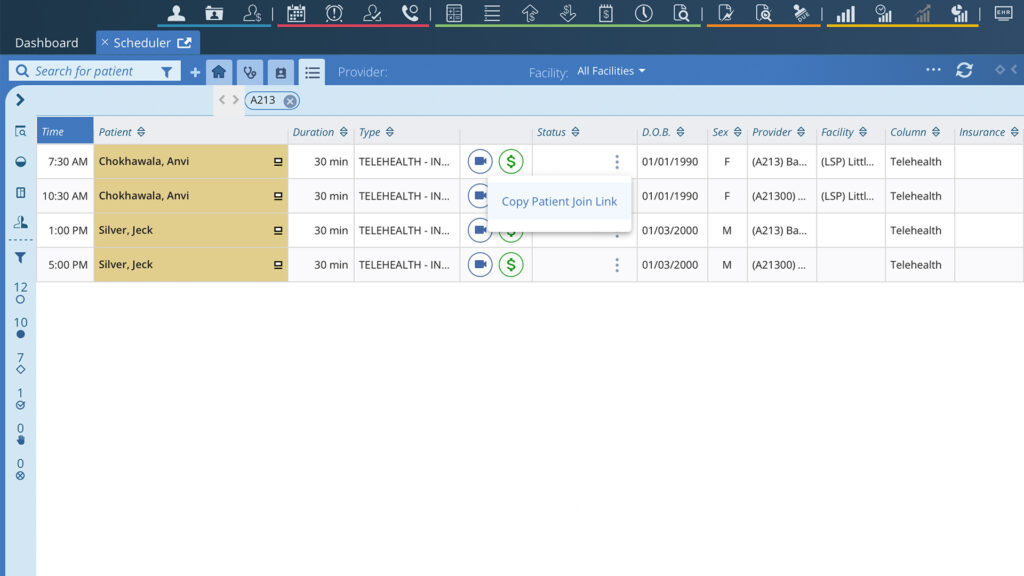
Credit: www.advancedmd.com
Frequently Asked Questions
What Is The Best Scheduling Software For Healthcare?
Shiftboard is the best healthcare scheduling software, offering advanced tools for managing complex shifts and automating assignments efficiently.
What Is The Best Free Scheduling Software?
The best free scheduling software includes Calendly for meetings, Homebase for employee shifts, and Trello for simple task boards. These tools offer essential features without cost, ideal for small teams and individuals.
How Much Does Scheduling Software Cost?
Scheduling software costs vary widely. Basic plans often start free. Advanced features and more users increase monthly fees, ranging from $5 to $100+. Enterprise solutions with custom pricing serve large organizations. Additional costs may apply for setup and premium support.
Choose plans based on features and team size.
What Is The Most Used Scheduling Software?
Calendly is the most used scheduling software for meetings. Google Calendar excels in personal and work task management. Homebase and QuickBooks Time lead employee scheduling. Square Appointments serves service businesses, while HubSpot Meetings integrates with sales and CRM.
Conclusion
Affordable scheduling software helps remote medical practices save time and reduce errors. Choosing the right tool improves patient care and staff coordination. Many options offer essential features without high costs. Simple interfaces help users adapt quickly, even with limited tech skills.
Investing in suitable software supports smooth daily operations and growth. Prioritize ease of use and essential functions for best results. Efficient scheduling means less stress and more focus on patients. Start exploring options today to find what fits your practice.
